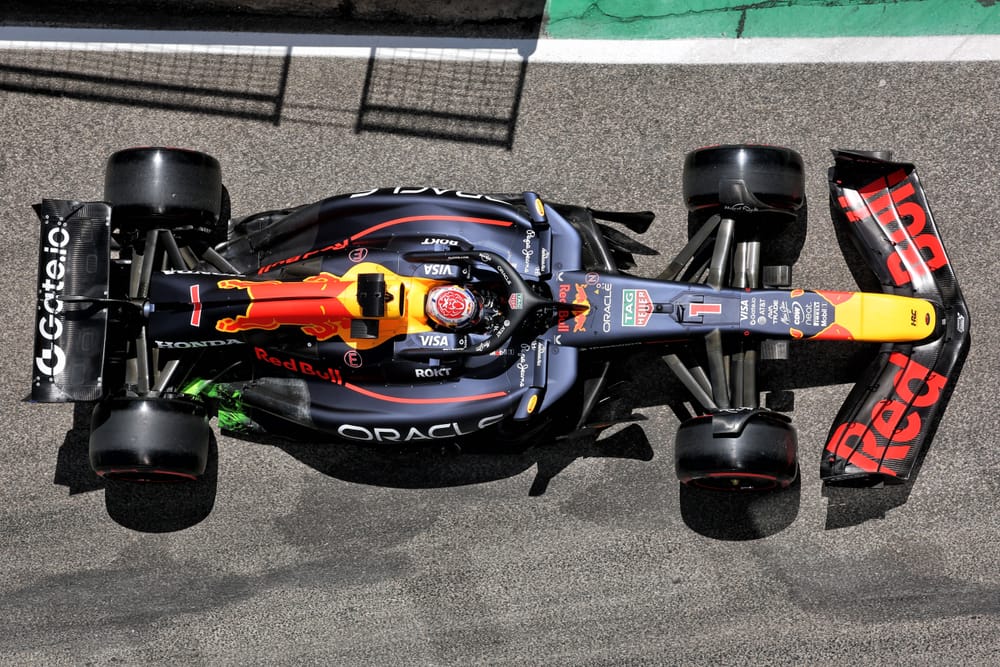Red Bull's turnaround from the Miami to Imola Formula 1 races was truly remarkable - Max Verstappen going from being unable to defend himself against the race pace of the McLarens in the United States to dominating and having no problems keeping them behind in Italy, while also managing the tyres very well in clean air.
Across those two races, Red Bull also introduced its first notable upgrades of 2025. Did they make a crucial difference?
The same car as last year?
When Red Bull's 2025 design the RB21 emerged, there was widespread surprise that it showed no major visual differences from the RB20 that had finished the 2024 championship in disappointing form, battling to victory in only five of the final 19 races after comfortably winning four of the first five.
And in the first races of the new season, Red Bull maintained a rather conservative profile with both upgrades and its title chances.
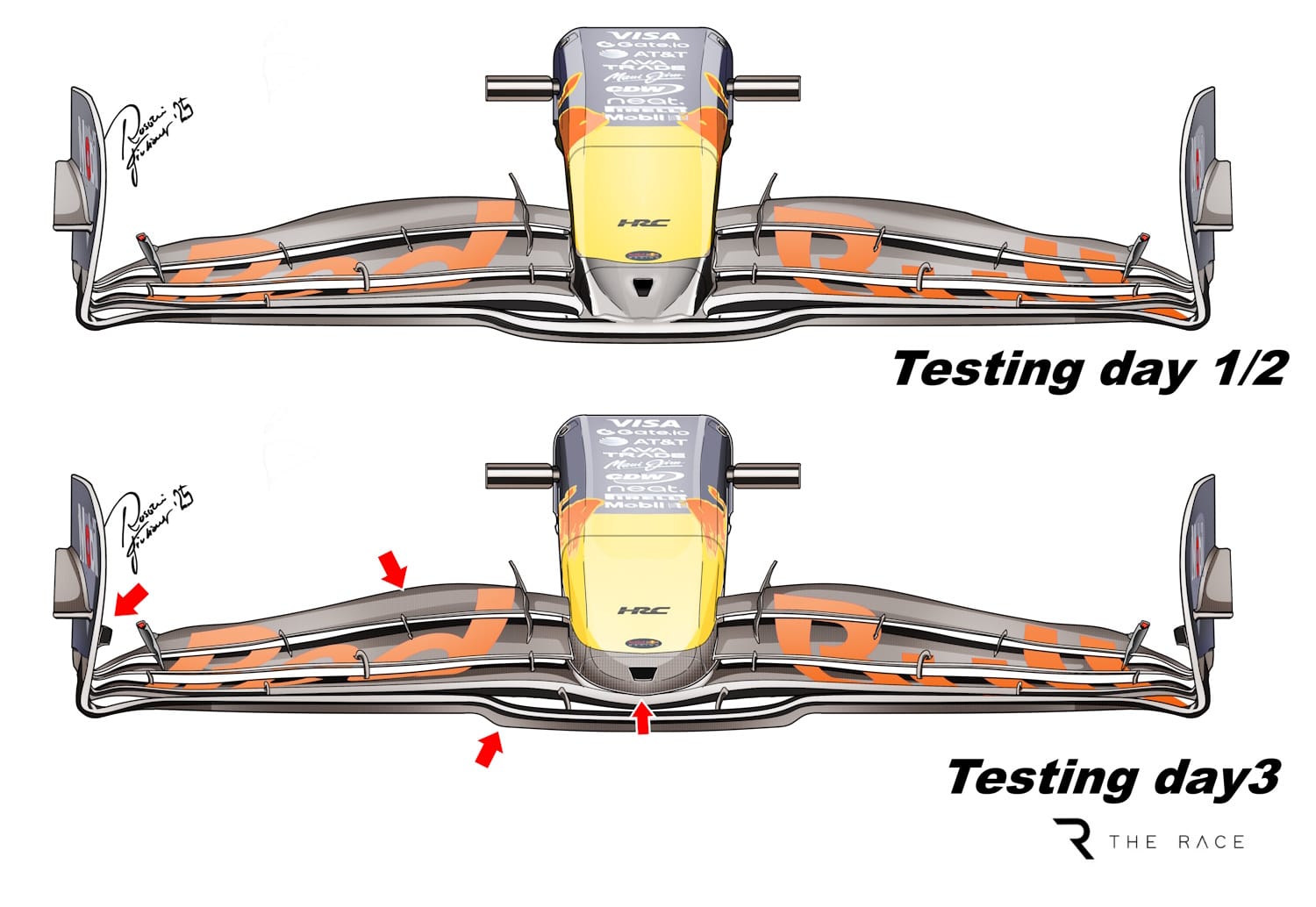
A first step came with a new front wing and wider nose, although in the following races Red Bull continued to alternate the new specification with the old one - especially on the Liam Lawson/Yuki Tsunoda car.
The initial changes made to the RB21 focused largely on cooling efficiency, with interventions aimed at improving internal flows to optimise component cooling without compromising aerodynamic efficiency.
The layout of the central radiator also changed after the first races to have a better distribution of internal masses and centre of gravity.
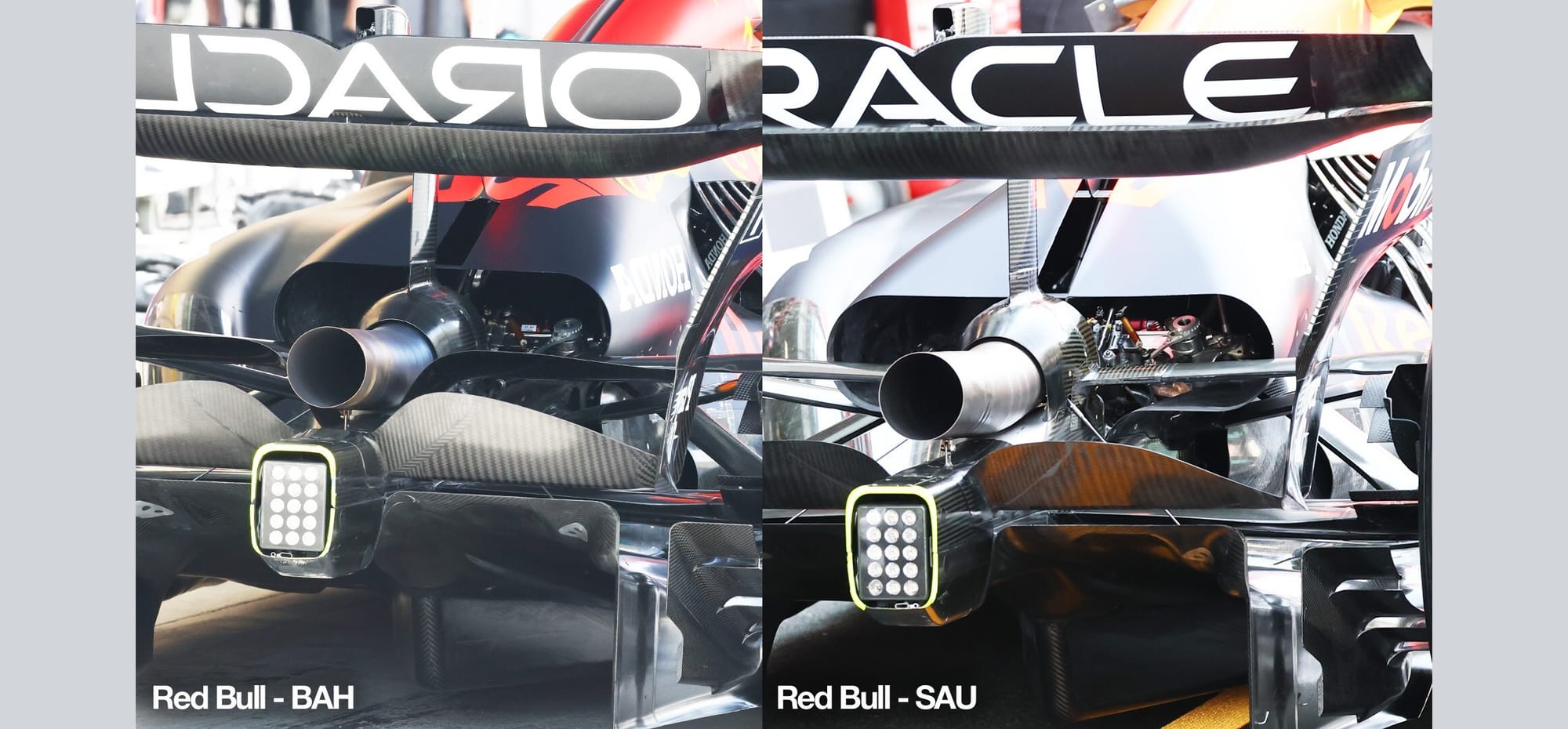
Consequential changes also came on the aerodynamic management of hot air in Japan and Saudi Arabia, where an updated engine cover also arrived at the rear.
Miami floor is just part one
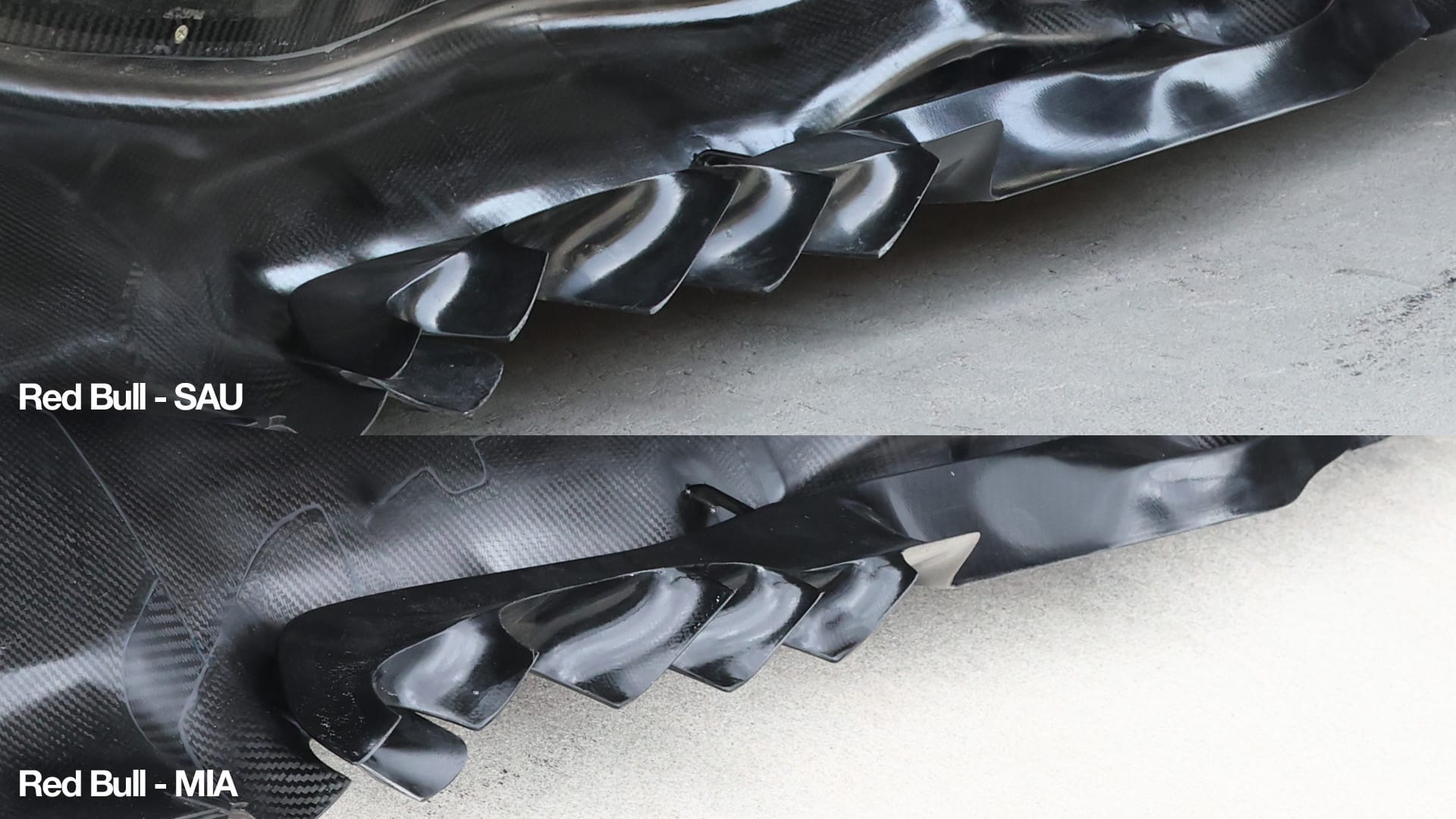
The first significant step in terms of aerodynamic load arrived over the Miami weekend, the sixth round of the season.
Red Bull brought a new floor, fitted only to Verstappen's car, a clear sign of a testing and data collection phase.
At first glance, the changes seemed rather restrained and inconspicuous, but in reality every area of the floor underwent minimal retouches to improve flows.
Even the venturi inlet area was updated with a different disposition of the innermost fence, an area that is always very delicate to touch up.
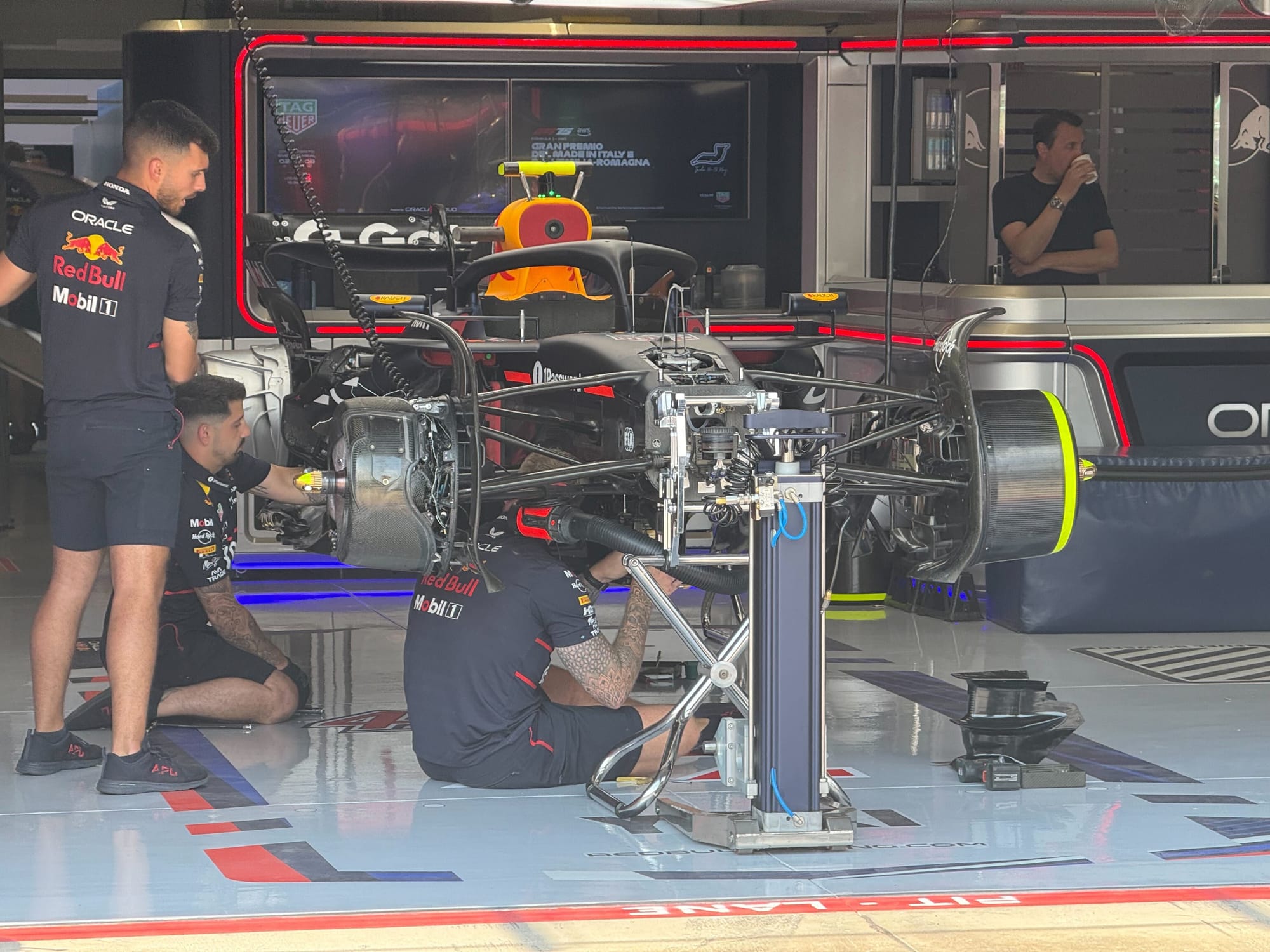
The main objective was to ensure more stable downforce, especially in rapid changes of direction and in roll or pitch situations.
In previous races, the RB21 had shown some signs of instability in bumpier sections and on circuits with more aggressive kerbs.
At Imola however, but also in Miami, the RB21 performed well jumping over kerbs, a clear step forward compared to 2024.
The new base tried to correct precisely these characteristics, improving the consistency of the aerodynamic behaviour over the lap.
Although the competition - particularly McLaren - was extremely competitive in Miami, the introduction of this update was an important first step in the technical evolution of the RB21, moving away from the old RB20.
Did the real RB21 arrive at Imola?
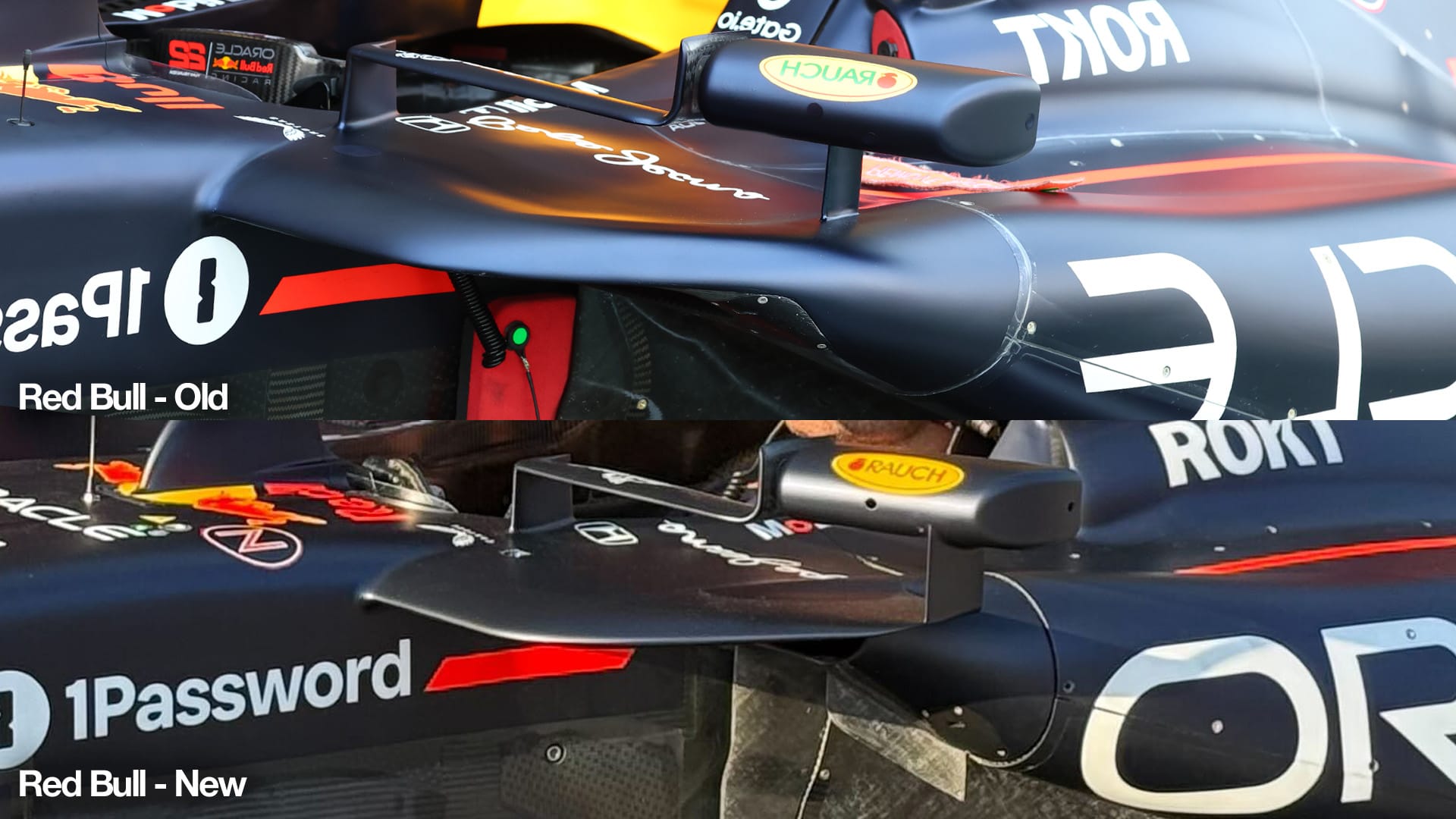
The second step of the package was introduced at the Emilia Romagna Grand Prix, and this time on both cars.
Here the intervention was more radical and visible, with a substantial change to the side belly pan inlets.
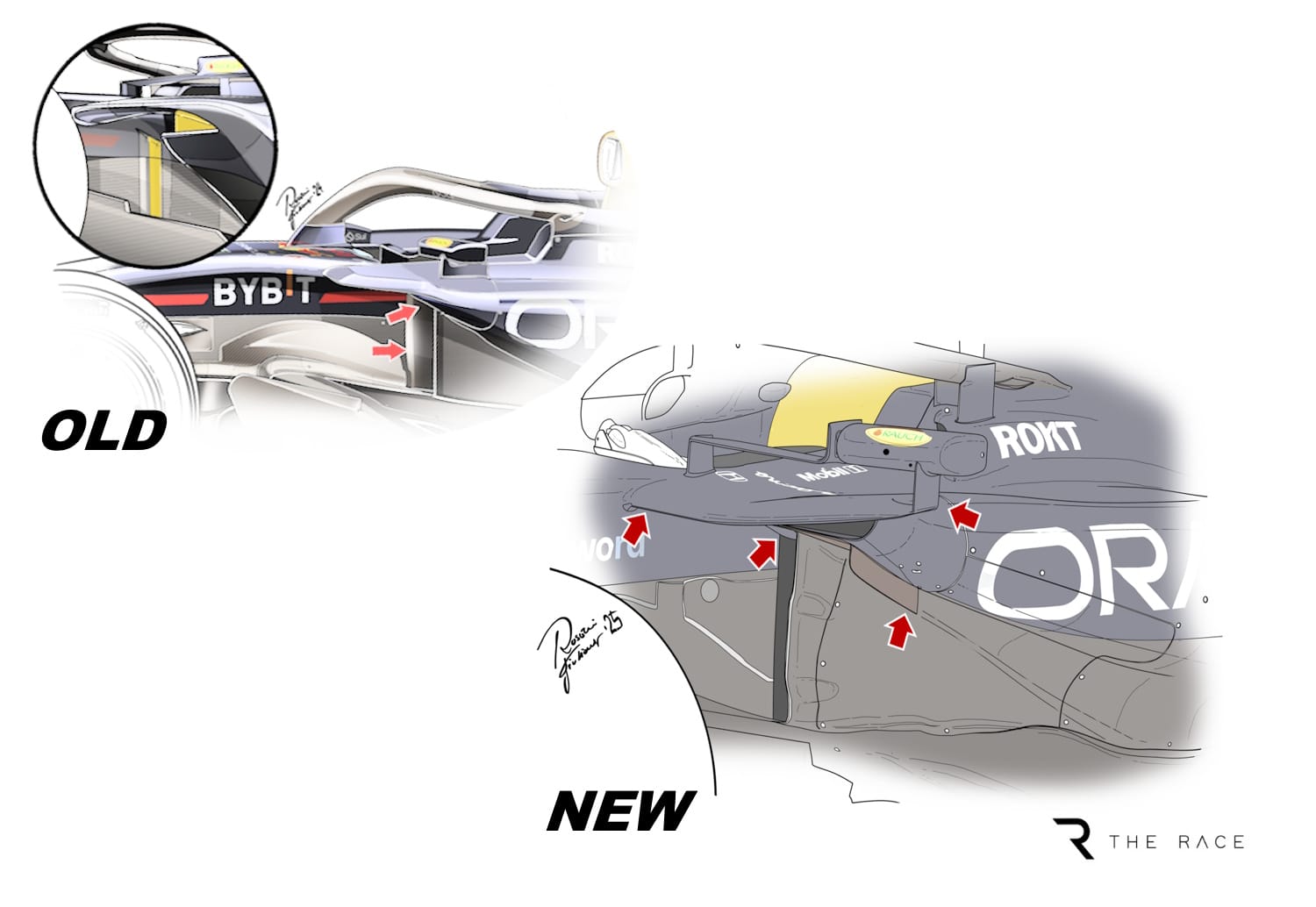
Red Bull abandoned the 'shark-mouth' solution, which had characterised its cars since the beginning of 2024, and which had been copied by many teams.
The new solution brought to Italy has geometry more similar to that seen on the Ferrari SF-25 and McLaren MCL39, a sign that the direction of development to be taken is there.
This choice has brought a number of benefits: the new design allows better management of the incoming flows towards the bottom of the car, improves overall cooling efficiency and allows a more effective diffuser feed.
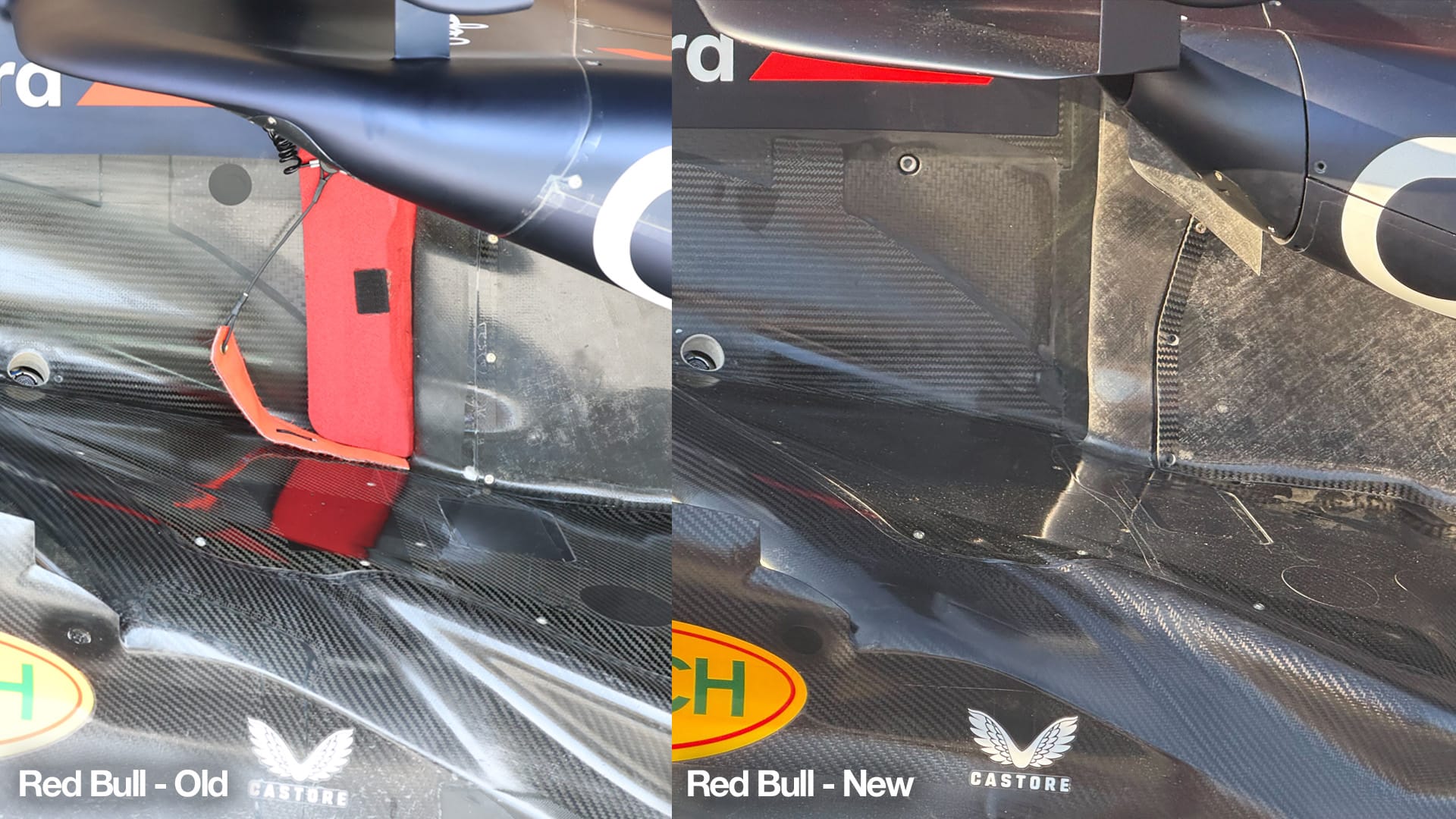
The overall effect was visible immediately: Verstappen won at Imola in a race that was anything but predictable, so soon after McLaren's domination in another hot race in Miami.
The RB21, with the full package, showed a renewed solidity and greater consistency.
Tyre cooling and the big flexi-wing moment
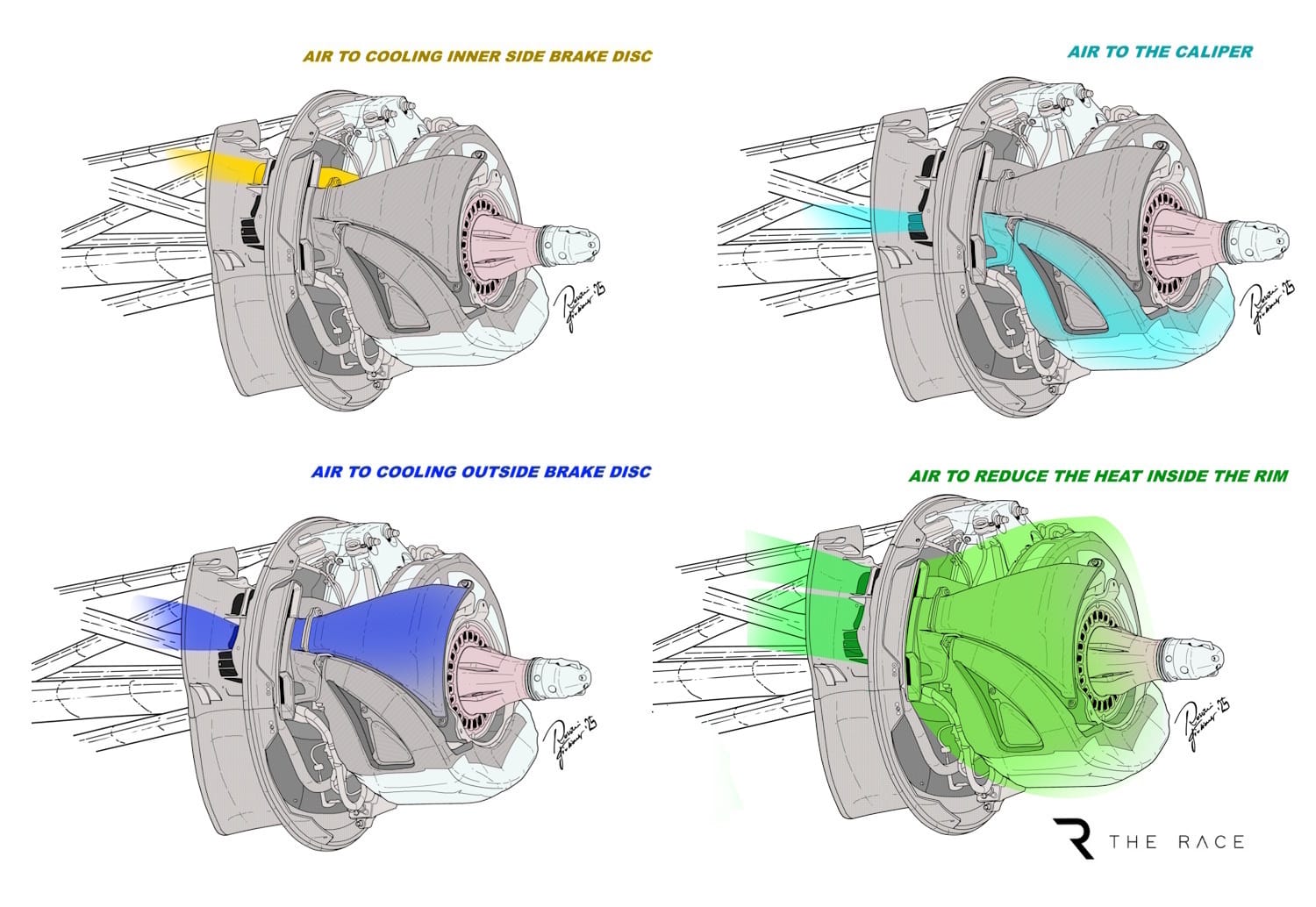
Red Bull continues to try to monitor McLaren's possible secrets in every area. The technical directive put in place at Imola on the front floor and clarification on the use of wheel corners was issued by the FIA under pressure from Christian Horner's team.
The FIA made it clear that on the McLaren drums no irregularities were found and that everything was legal.
Looking to the near future, Red Bull does not intend to slow down its development on the tyre management front, an aspect where McLaren certainly still has an important margin.
We have already revealed on The Race how Pierre Wache's team is working on both front and rear brake drums to find a way to avoid overheating.
These components help to improve the thermal management of the tyres, especially the rear ones, reducing the risk of overheating and allowing more uniform degradation.
This is crucial from a race perspective, especially in the summer conditions of the upcoming European grands prix.
And Red Bull is also anxiously awaiting the front wing anti-bending directive that kicks in from Spain next week.
With McLaren's (ex-Red Bull man) Rob Marshall having made aeroelasticity one of the main strengths at his new team, Red Bull is hoping its main rival feels a noticeable impact from the enforced Barcelona changes.


